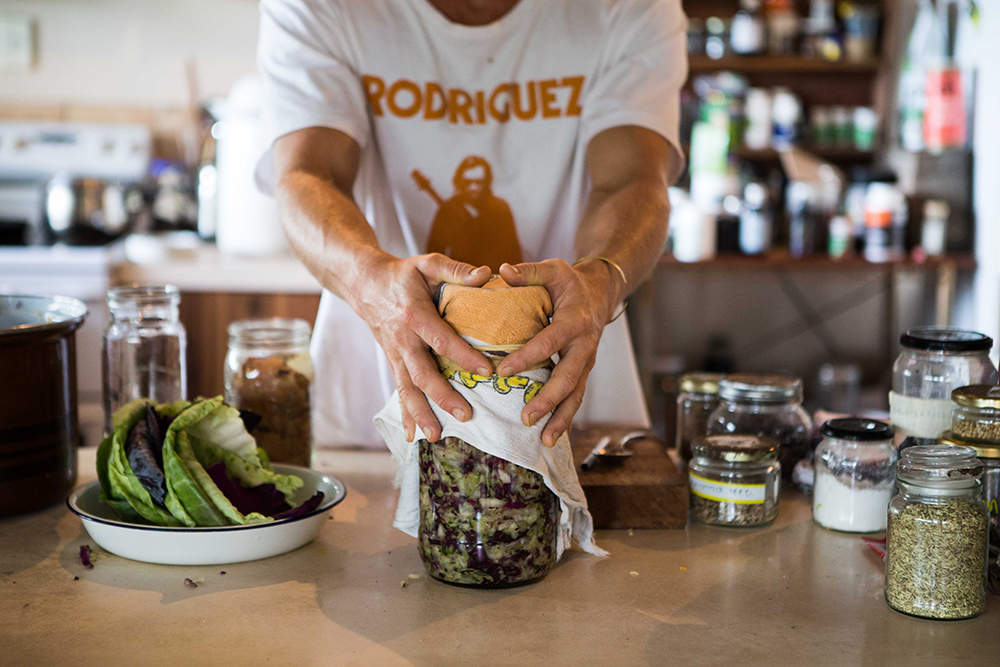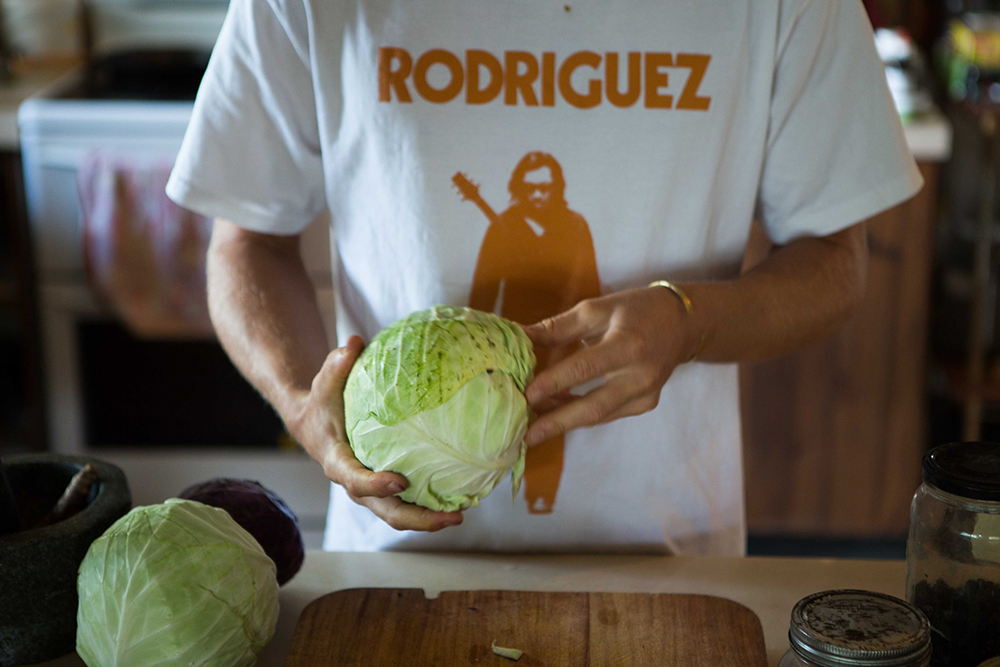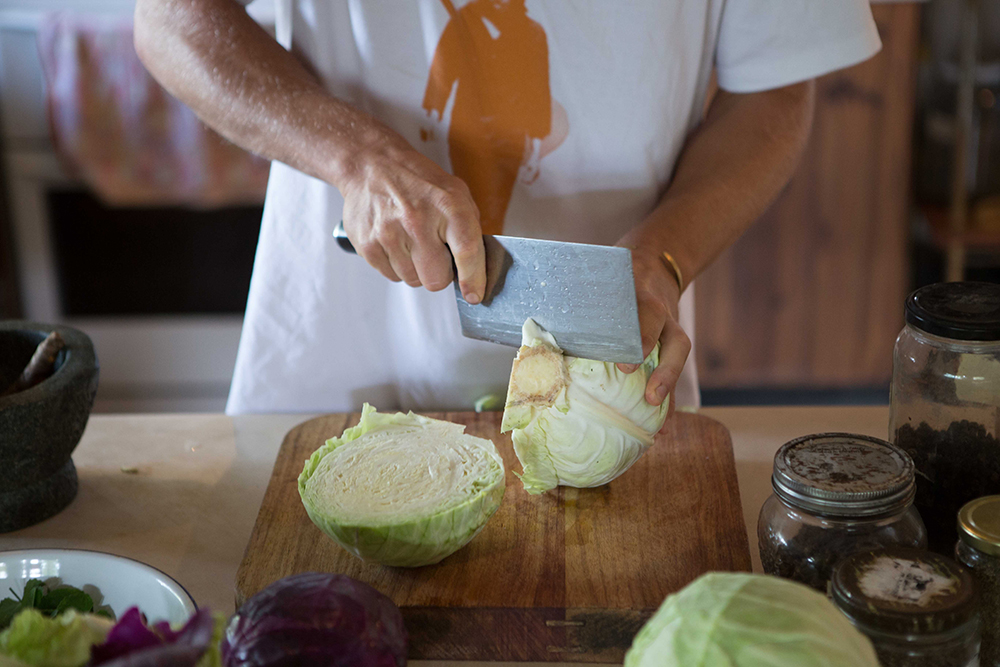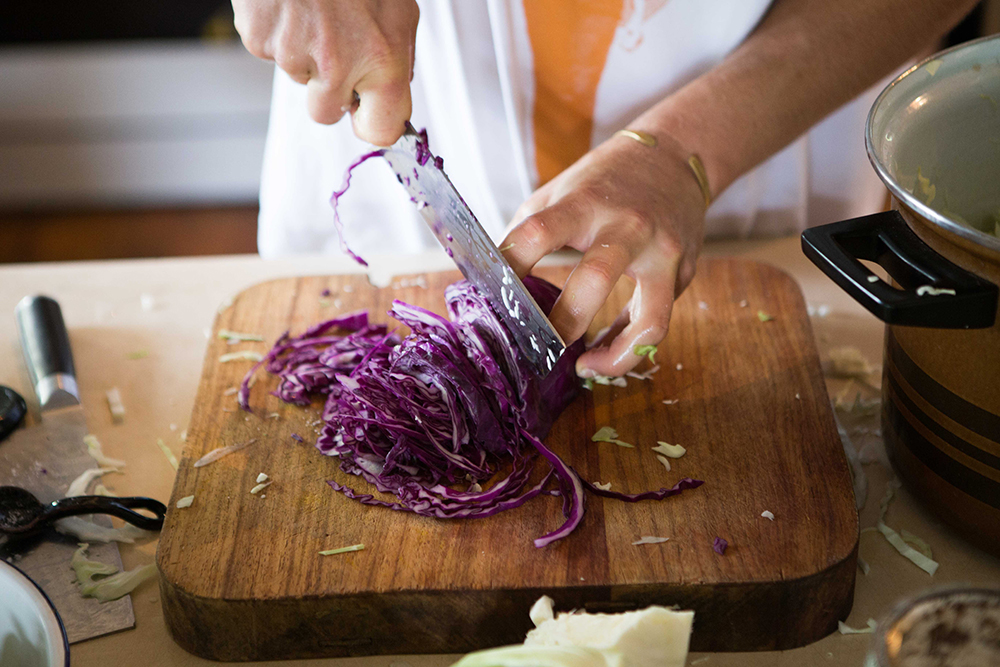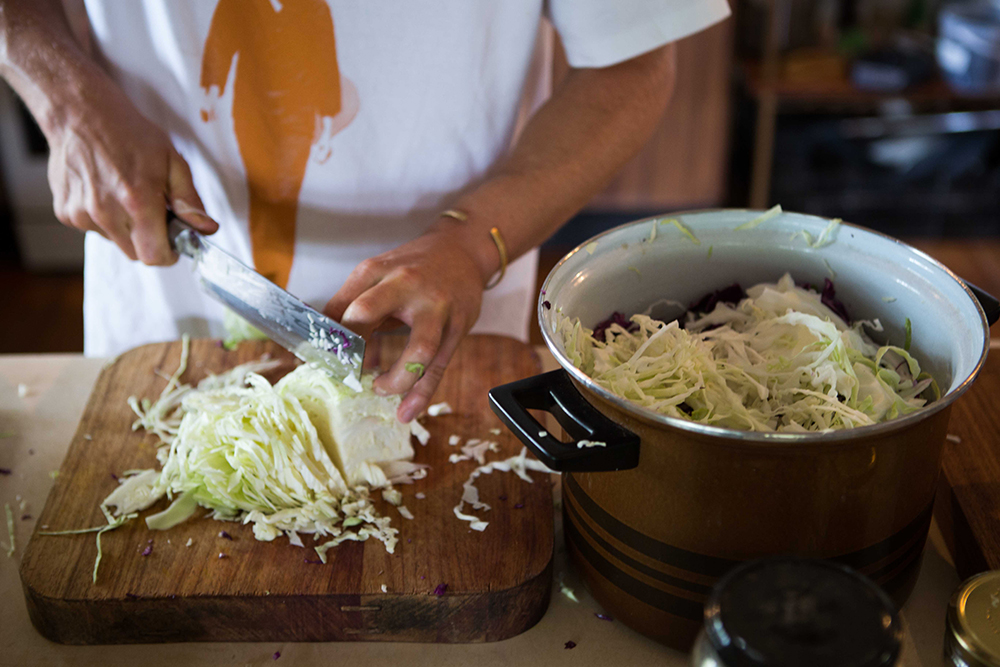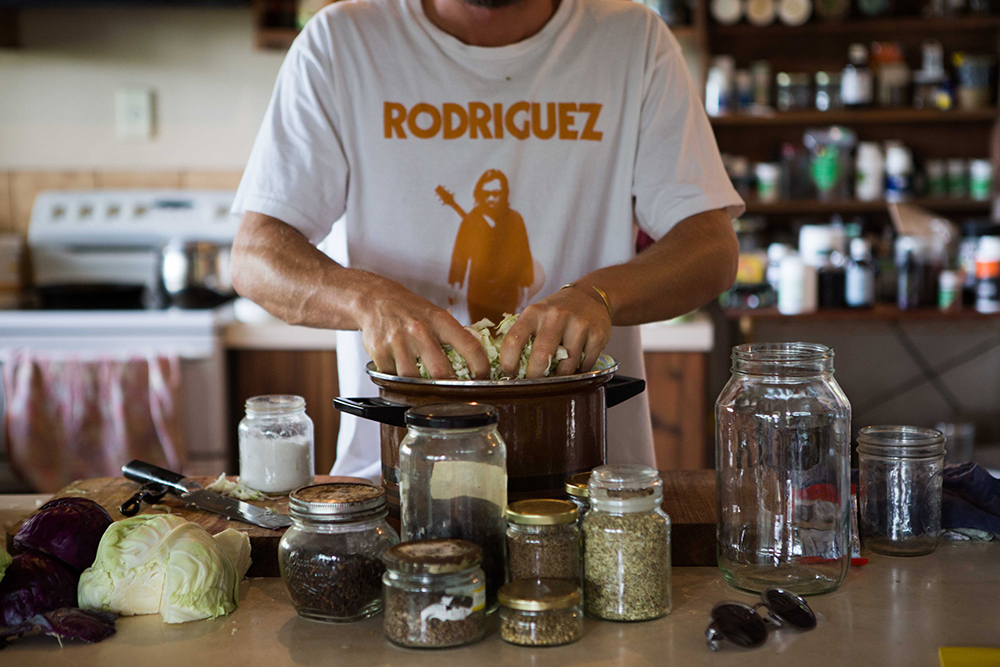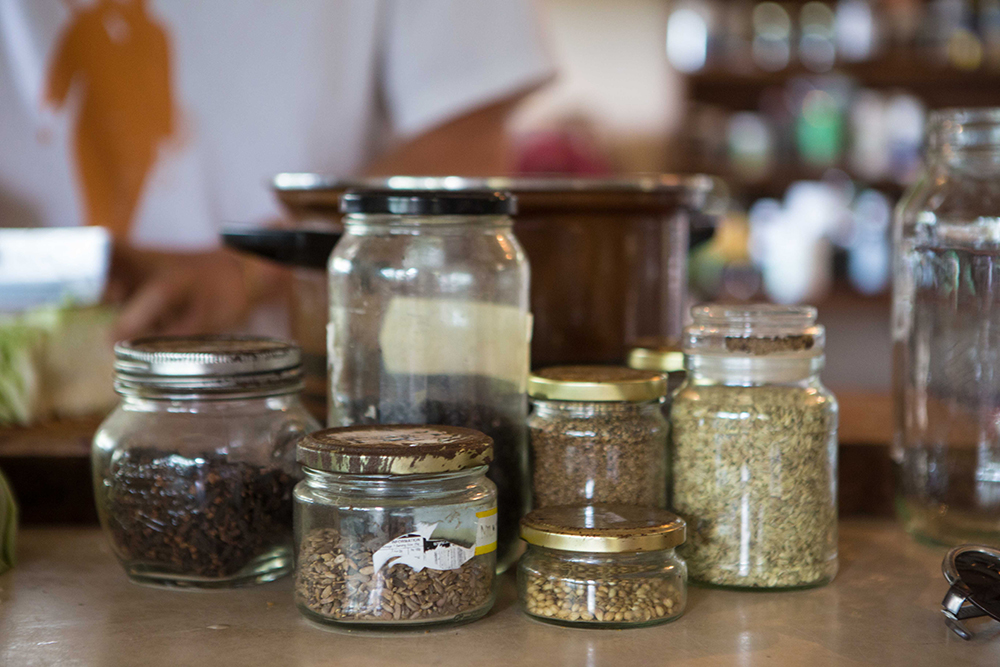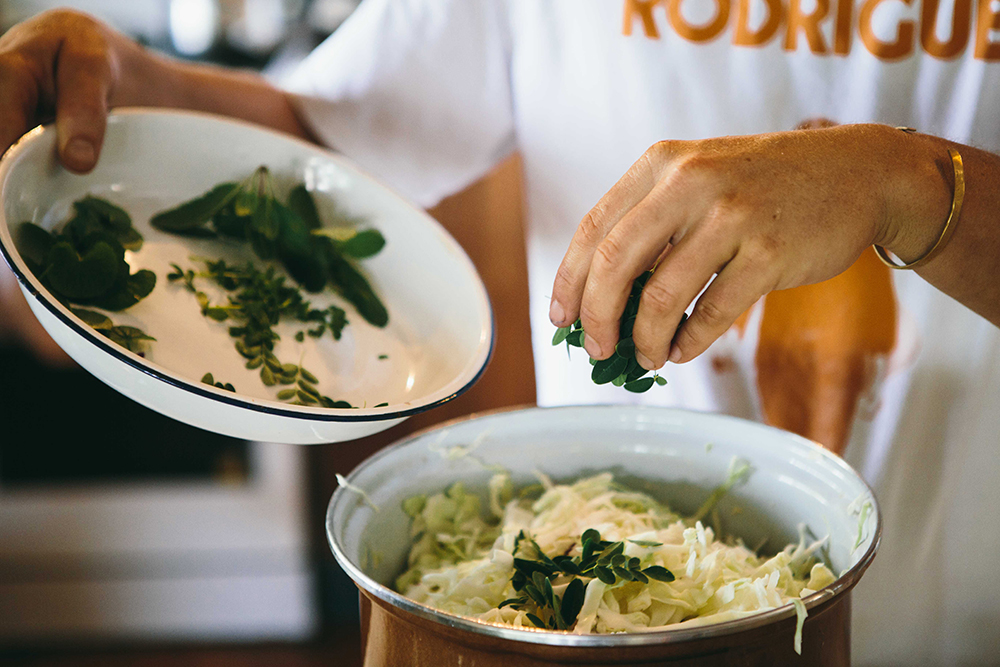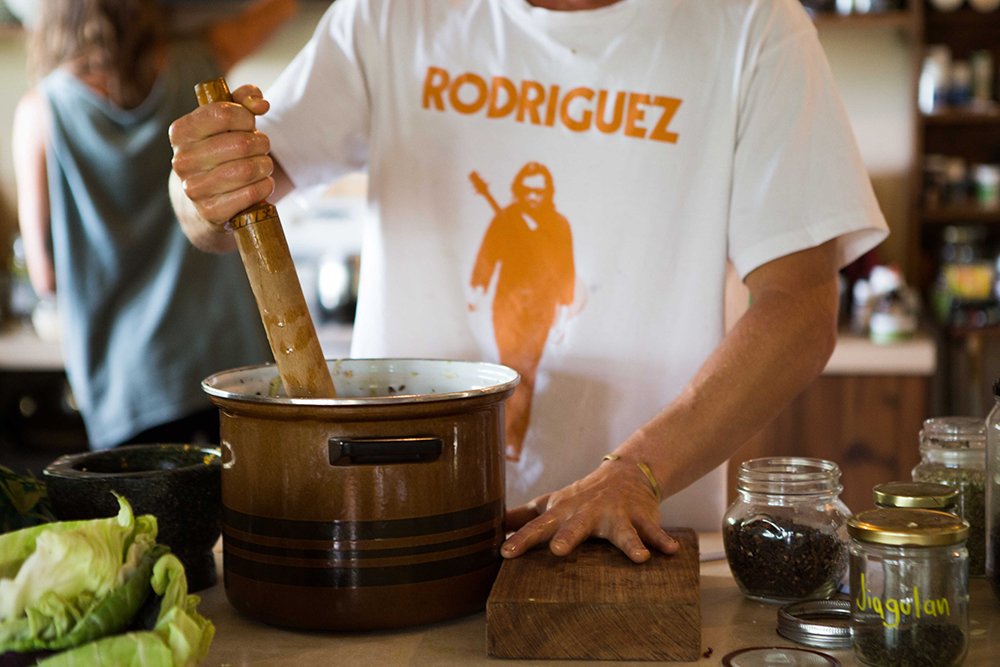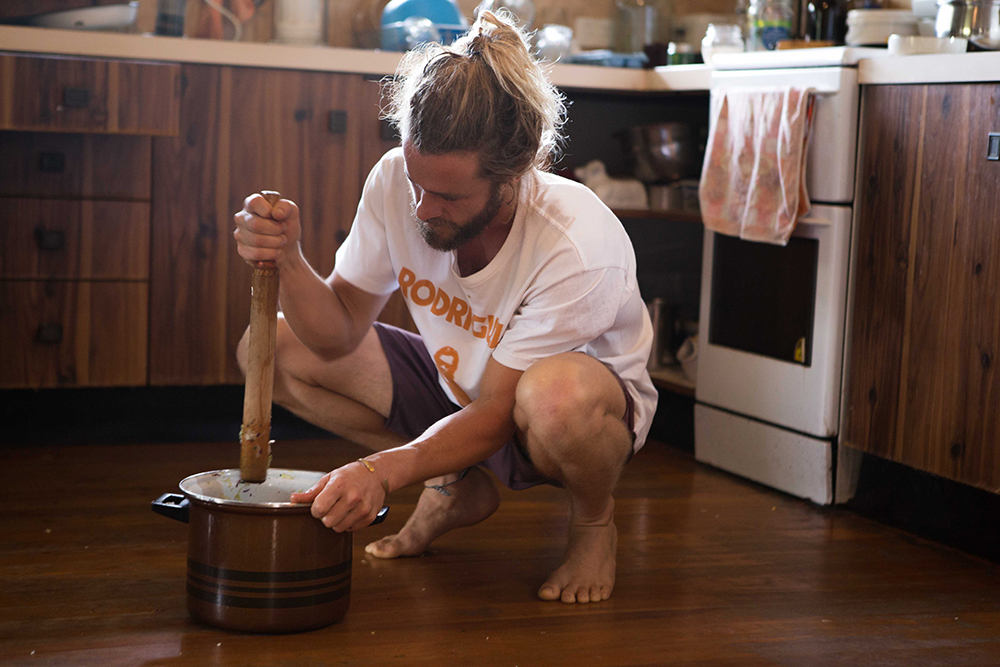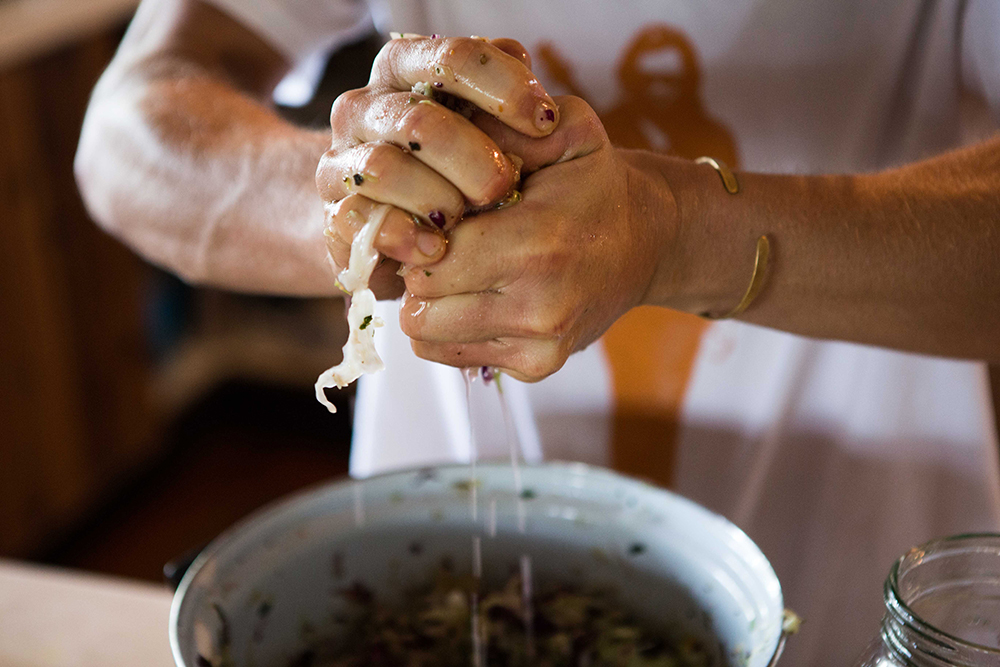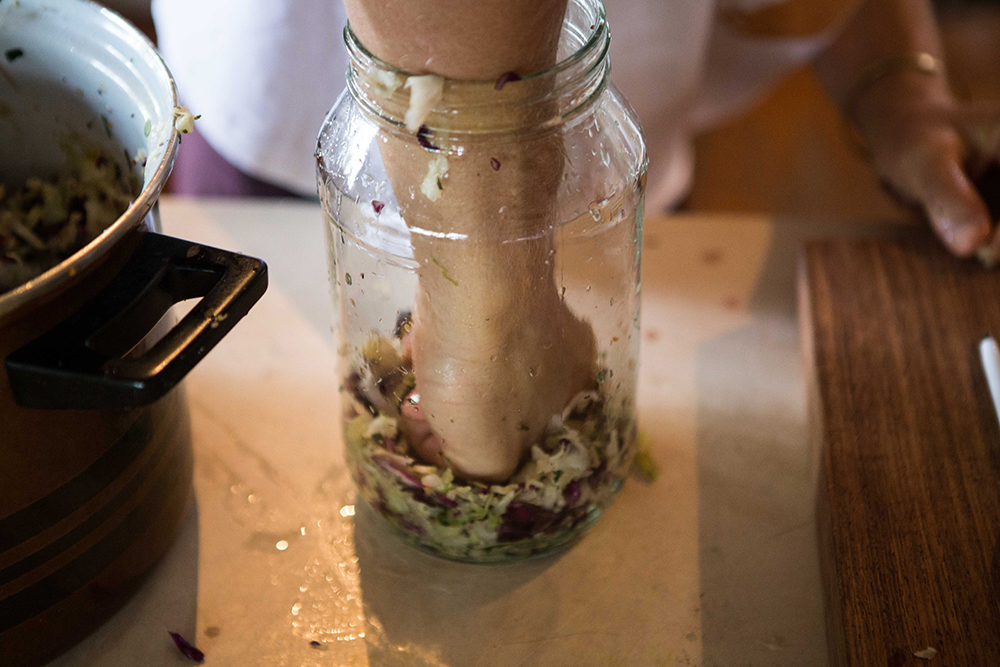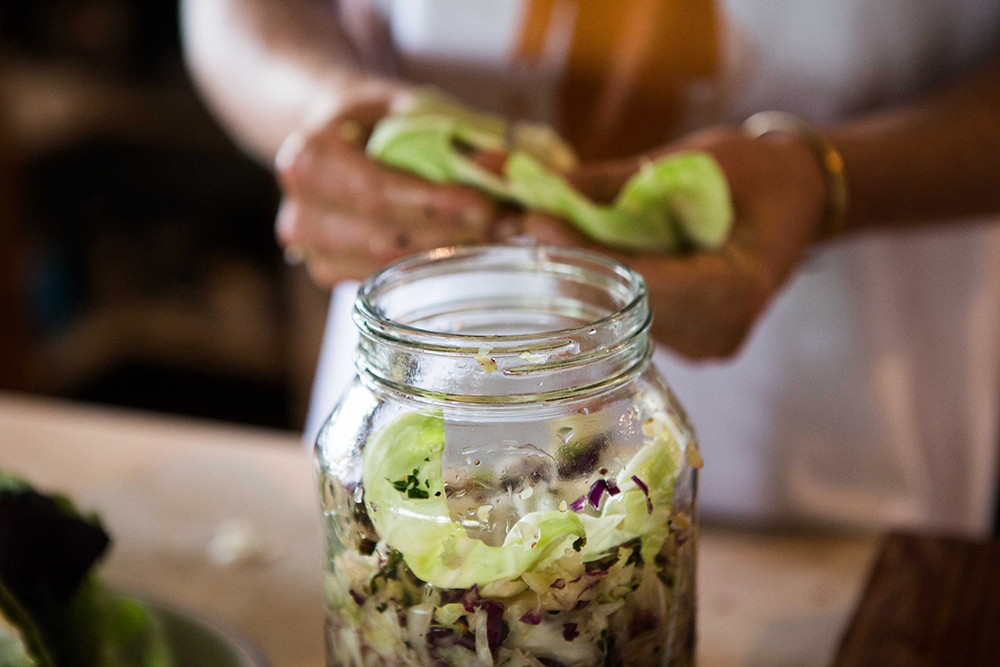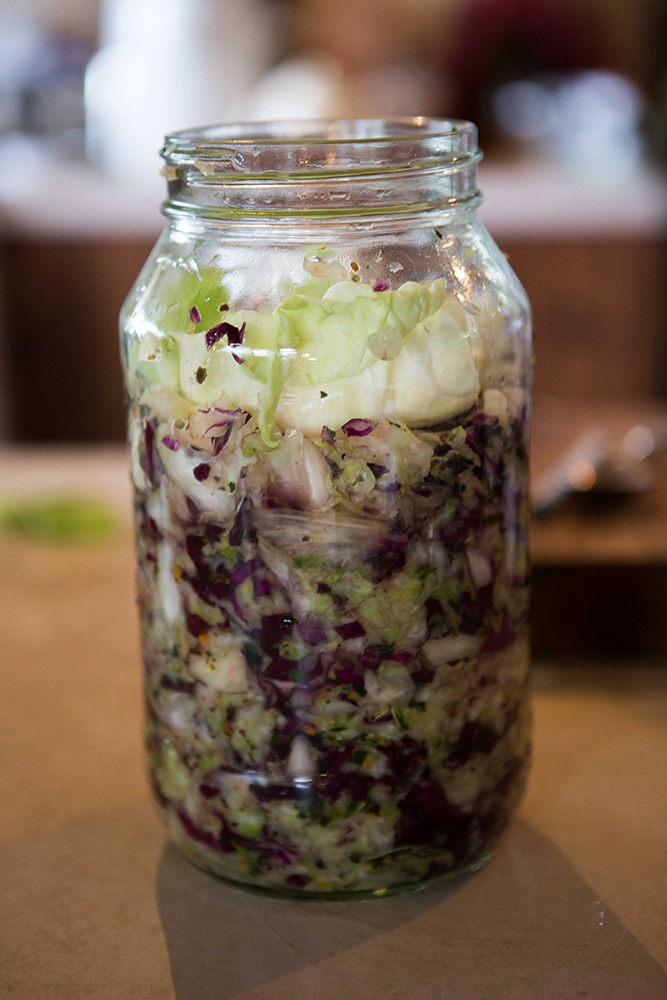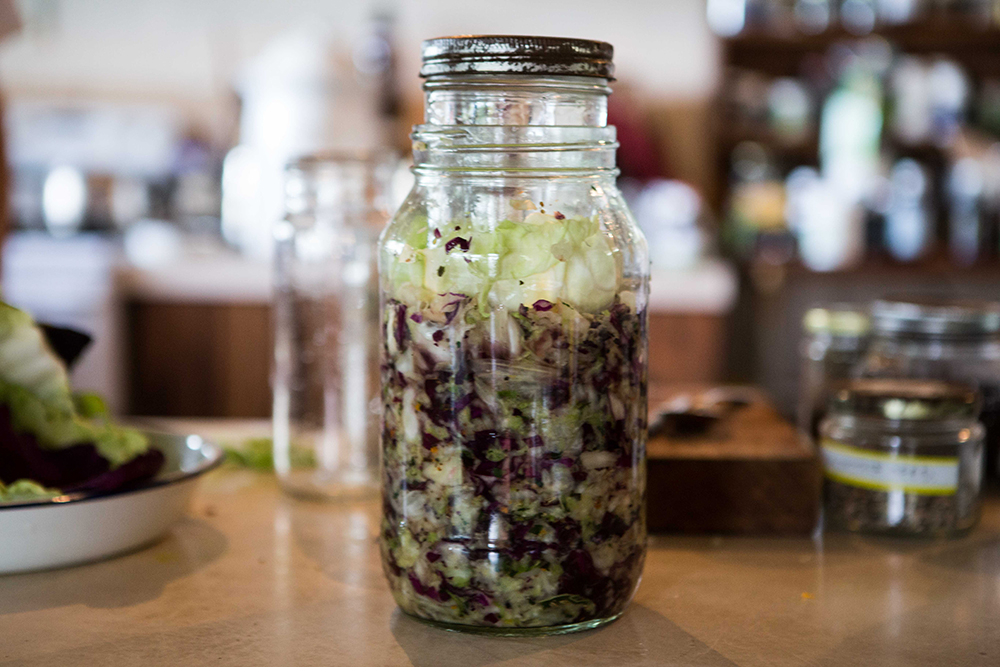Roadhouse Sauerkraut
As the seasons change, the cooler conditions are ripe for the production of some gut-soothing sauerkraut—the nutritious fermented cabbage digested through the ages by the likes of Genghis Kahn, Erik the Red and ancient Rome’s Pliny the Elder. The salting, and resultant fermentation, of cruciferous vegetables is one way to obtain the maximum health benefits they offer, and the bacteria this process creates is shown to help lower cholesterol, provide probiotics to boost gut flora and act as a guardian against certain cancers.
The key to getting all the goodness kraut has to offer is to eat it raw and unpasteurised. The best way to do this is to make it at home. Liam Flanagan, master alchemist and part-owner of the Roadhouse in Byron Bay, has ‘the full radish’ on all things lacto-fermented and for this week’s Home Made, he passes on a liver-soothing cabbage-kraut recipe to get you through an entire winter. The slower and cooler the fermentation process, the better the kraut is going to taste. So, rather than trying to make this recipe quickly in hot weather, try and let the kraut sit in a cool, dry bench space for about three weeks to a month. When ready, add a little to any meal for an instant immunity boost (and inevitable toot!).
What you’ll need:
1 large jar, cleaned thoroughly with hot water and soap
1 smaller jar or weight (which will sit in the neck of the larger jar)
2-3 cabbages (and/or brussel sprouts, carrot, cauliflower, broccoli etc. fresh or old from your veggie crisper)
Flavoursome additions: ginger, turmeric, cloves, kelp, caraway, fennel seeds
Additional probiotic if you wish
1 mandolin or sharp knife
1 healthy bowl of good quality sea salt
A mortar and pestle to pound down turmeric or ginger
A rolling pin or pestle to pound the mixture
A clean tea towel
1. Peel off the outer layers of the cabbage. Make sure you keep the leaves – you’ll use these later to keep everything plugged under the brine.
Lactobacillus lives on the skin of cabbage so you generally don’t need to add any other bacteria, and if you use organic produce, you are going to get the local landrace probiotic. So as long as the soil is good, you know you are getting the nutrients from whatever the vegetable has been grown in. This will add different enzymes depending on the area your veggies come from (we’ve used local-grown Byron Bay green and purple cabbages. Green cabbages are a great source of vitamin A and C, and the red cabbage, as well as bringing the former, and colour to the mix, also contain anthocyanins, cancer-fighting antioxidants not found in green cabbages).
2. Finely slice up all the cabbage and place into a big saucepan or bowl.
3. Add a few fair whacks of salt to the pile of cabbage as you go (a couple of tablespoons at a time). This creates the brine by drawing the water out of the cabbage flesh. Mix and massage the cabbage as you go. The salt breaks down the cell walls, so as soon as you get it going the better. Once you’re brine starts happening you create the anaerobic environment the lactobacillus thrive in.
4. Once all your veggies are in, add your herbs, turmeric, ginger etc. For flavour—and to create a ‘medicinal broth’—we added: holy basil, gotu kola, brahmi, moringa, cloves, schisandra, kelp, gynostemma, milk thistle, fennel seeds, ginger and tumeric. Mix together with your hands.
5. Next it’s time to pound and break down all the tough cabbage skin. This will really get the brine going. Once you’re done, give it a taste and make sure it’s to your liking. It will probably be a bit salty—this is fine. If it tastes too salty, you can water it down by just tipping some of the brine off and adding filtered water too it. The salt flavour will dissipate as the process goes to work as it will keep drawing out the liquid. Leave now to sit for 10 mins.
6. Get your jar. Make sure it’s cleaned and thoroughly sterilised. If there is any mould in there, it will ruin your batch.
7. Wring each handful of cabbage of its brine.
8. Push handfuls down into the jar, making sure there is as little oxygen in the mixture as possible.
9. Fill the jar three quarters of the way up. Take the outer cabbage leaves you put aside at the start and create a lid for the mixture. Tip the brine from the saucepan over the cabbage until the kraut mix is completely covered. There should be no exposed surface area on top. This will make the kraut susceptible to mould.
10. On top of the cabbage leaf, you can fill the smaller jar with water and use it as a weight. Note: anything can be used here as long as it keeps pressure on the cabbage mix.
11. Cover the whole lot with a clean dry tea towel and secure with a rubber band.
12. Once the acid becomes activated the brine will possibly bubble up over the top of the jar. As this happens you can add more salty brine to make sure the cabbage is always under liquid and not exposed to air.
13. Place the jar of kraut on top of a plate (in case it bubbles over) and store in a cool, dry place on the bench. Taste as you go, the kraut can be eaten any time from a week to months after making depending on how you like it. Once it’s ready, make sure you seal it well with a lid and keep it stored in the fridge. Try not to contaminate it by using dirty forks or fingers—that way it’ll stay healthy, ready to provide good vibes all winter long!
A big thank you to Liam for working his magic to turn a couple of humble cabbages into the perfect cool climate medicine. If you want to try the other ferments he’s turned his hand to, his kombucha, mead, and elixirs can be found at the Roadhouse, Byron Bay or on instagram at @roadhousebyronbay.
